GEOGRAPHY population and the environment單詞卡 | Quizlet
1/143
There's no tags or description
Looks like no tags are added yet.
Name | Mastery | Learn | Test | Matching | Spaced |
|---|
No study sessions yet.
144 Terms
population A01
1. europe and asia have over 85% of the world's population
2. china has 1/5 of the world's population
3. less than 10% live in the world's southern hemi-spehere
4. the last 100 years saw an increase of 400%
5. greatest increase are in asia, africa, latin america
natural factors affecting population
1. climate - affect the health & wellbeing of the population (agriculture/disease)
2. soil - water quality/nutrition content affects the agriculture productivity)
3. natural resources - clean water = needed for health - building materials to build houses
human factors affecting population
the industrial revolution - mid 1700s, shift from labour-intensive industries to technological manufacturing processes (machinery/fossil fuels/factories)
population density
the total number of people within a unit of area
population density calculation
the number of people / total land area
what determines where people live?
1. climate - rainfall, temperature and the sun affects food productivity
2. soils - fertility affects agriculture
3. water supply - needed for hydration, irrigation and domestic use (the nile)
4. geology - underground fossil fuels (germany)
birth rate
the number of births per 1000 per year in a country
death rate
the number of deaths per 1000 per year in a country
fertility rate
the number of live births per 1000 women of normal reproductive age (15-49) per year in a country
life expectancy
the number of years that a person can be expected to live
longevity
the increase of life expectancy over a period of time
natural change
the birth rate - the death rate, it will be natural increase if the birth rate is higher than the death rate
infant mortality rate
the number of deaths of children under the age of 1 per 1000 live births per year
migration rate
the balance of immigration and emigration
migration calculation
immigration - emigration per 1000 per year
spearman's rank
establishes whether two ranked sets of data are related

the demographic transition model (DTM)
a model of how the size of a population changes as a country develops its economy
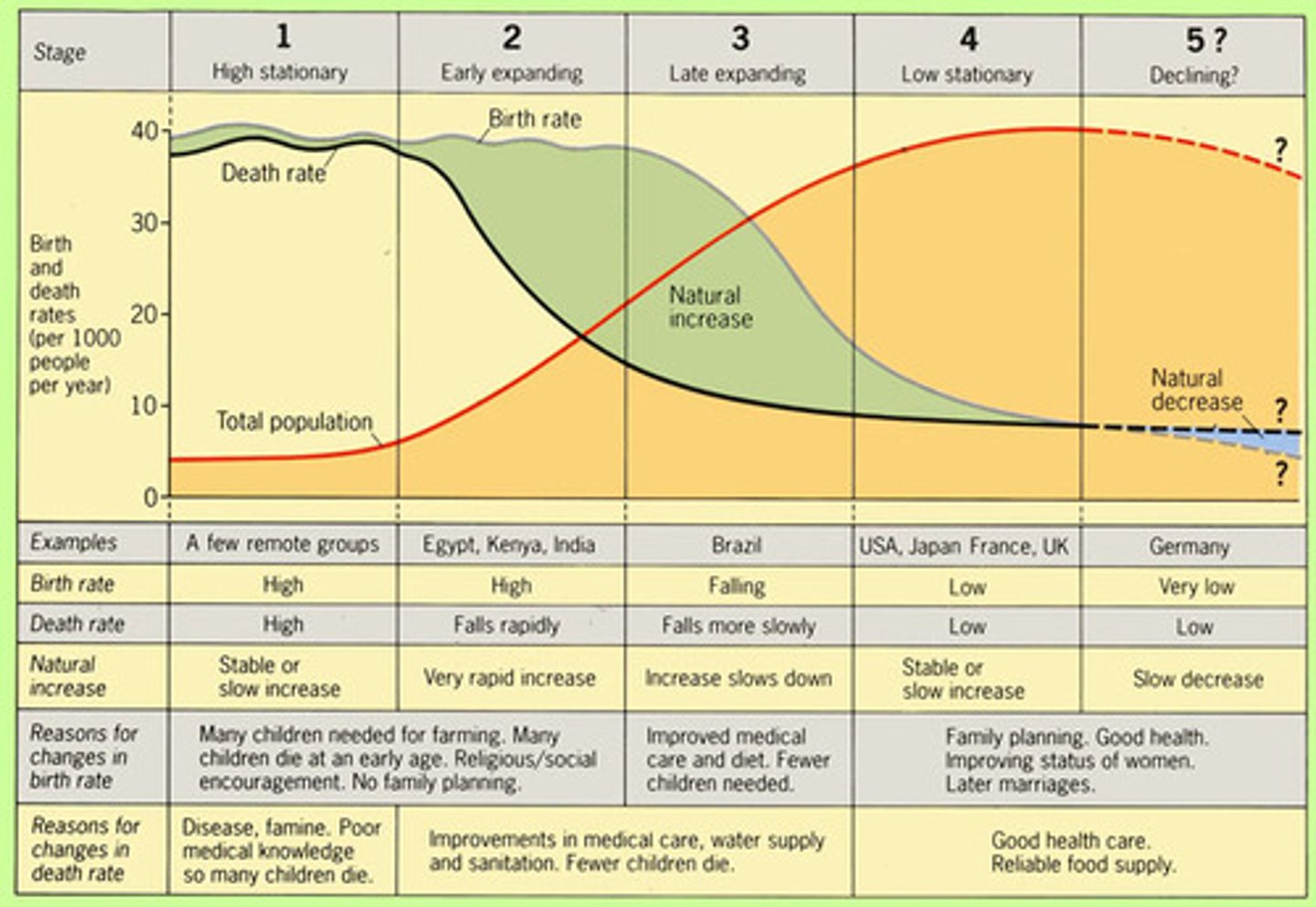
strengths of the DTM
1. good description of general trends
2. provides a basic comparison between countries
3. predictive
weaknesses of the DTM
1. suggests that all countries will industrialise
2. created in europe therefore not all countries follow the same stages
3. ignores the impacts of government policies (china's one-child policy)
stage 1 of the DTM
birth rate and death rate is high but fluctuate, this is because there is little access to birth control, many children die in infancy, no sanitation
stage 2 of the DTM
birth rate remains high but death rate falls rapidly causing natural population growth, this is because there are improvements in medical care, sanitation, water quality, quantity and quality of food
stage 3 of the DTM
birth rates falls rapidly while death rate falls more slowly, this is because of increased birth control and government policies
stage 4 of the DTM
both birth and death rates remain low resulting in a steady population growth, this is because women have greater freedom about having children and think more about fulfilling their own desires before starting a family
stage 5 of the DTM
death rate slightly exceeds birth rate causing the total population to decline, this is because of homosexual couples not having children (only seen in some western countries)
population pyramids
shows the composition of a population (many LICs will have high number of young dependants while HICs have a growing number of elderly dependants)
dependants
people who rely on the economically active for support (elderly 65+ or very young <15)
characteristics of a population pyramid
short pyramid = low life expectancy
wide base = high birth rate
thin middle = less economically active workers => less wealth
concave sides = high death rate
convex sides = population active and in good health
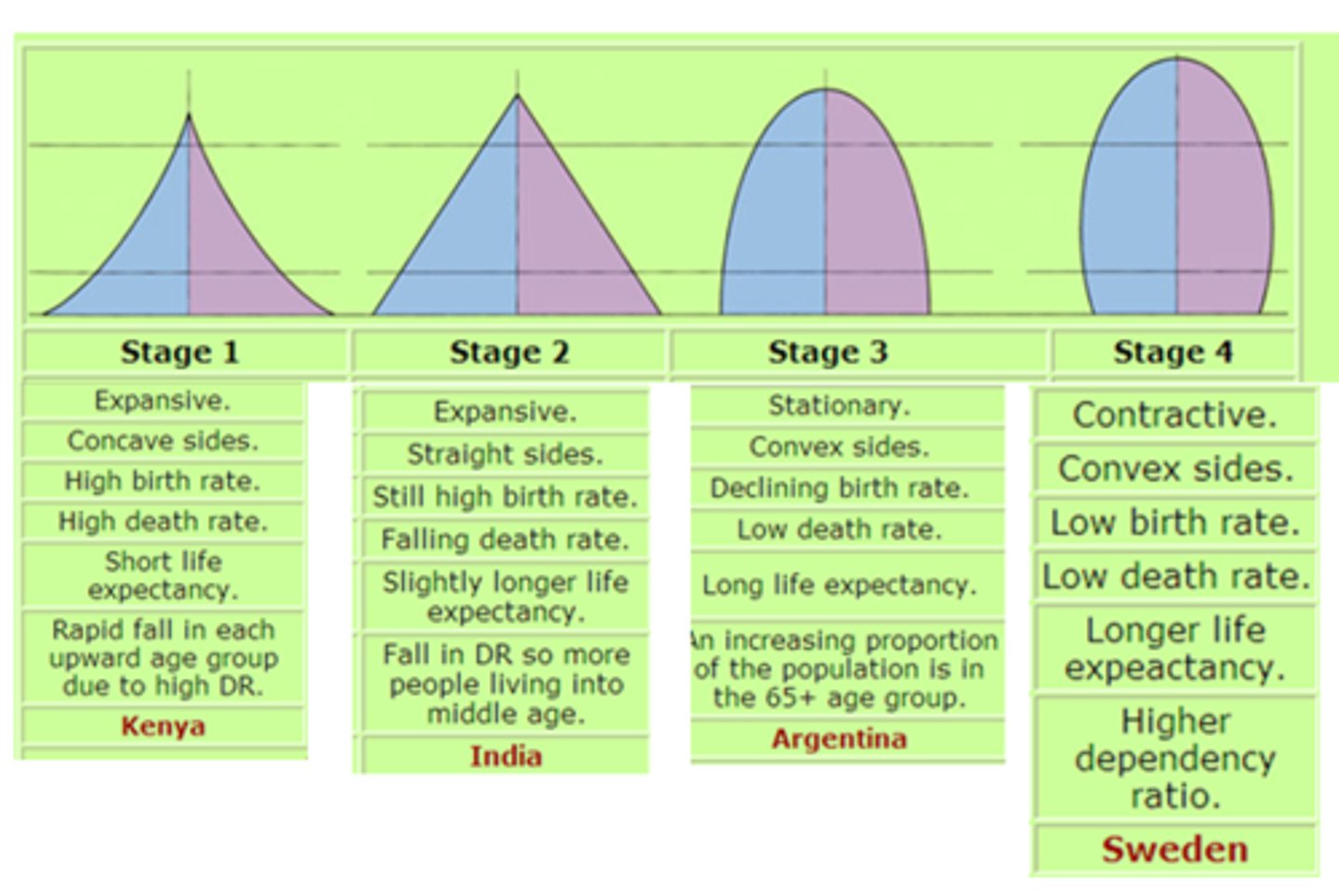
demographic dividend
the boost in economic growth due to changes in a country's population age structure
demographic dividend explanation
fertility rates decrease, working-age population grows larger relative to the younger dependant population, opening opportunities for rapid economic growth
dependancy ratio formula
[(% over 65) + (% under 15) / %15 - %64] * 100
![<p>[(% over 65) + (% under 15) / %15 - %64] * 100</p>](https://knowt-user-attachments.s3.amazonaws.com/1e2da8d7-053e-475a-8a55-59a8375186a5.png)
pro-natalist policy in france
encouraged an increased in french birth rates in 1939 due to population decline after WW1, receive well paid maternity leave and payments up to £1064 to couples having a 3rd child
the transmigration program
migrated people from densely populated areas of Indonesia to less populated areas, moved 2.5 million people from Java and Bali to Papua and other islands, believed it would reduce poverty by providing land and new opportunities as they had problems with scarce resources and overcrowding
china's one child policy
limits families to only have one child, would receive a 5-10% salary raise for only having one child, they introduced it because they were very poor and under communist power, the leader believed the more people the stronger the nation, population growth slowed massively for people to have enough food and job opportunities
the population, resources and pollution model (PRP)
shows the relationship between population growth, human demand for resources, and the environmental consequences
PRP model negative feedback example
population increases > more resources needed > environmental degradation > decline in resources > population decreases
PRP model positive feedback example
population increases > demand for resources increases > resources acquisition increases > more resources to support the population > population increases
malthusian population theory
population grows at a rapid geometric rate, resources increase at a slower arithmetic rate, when the population meets the resources rate at the critical point the population falls drastically as the resources cannot meet the needs of the population's demand (the population exceeds the carrying capacity)
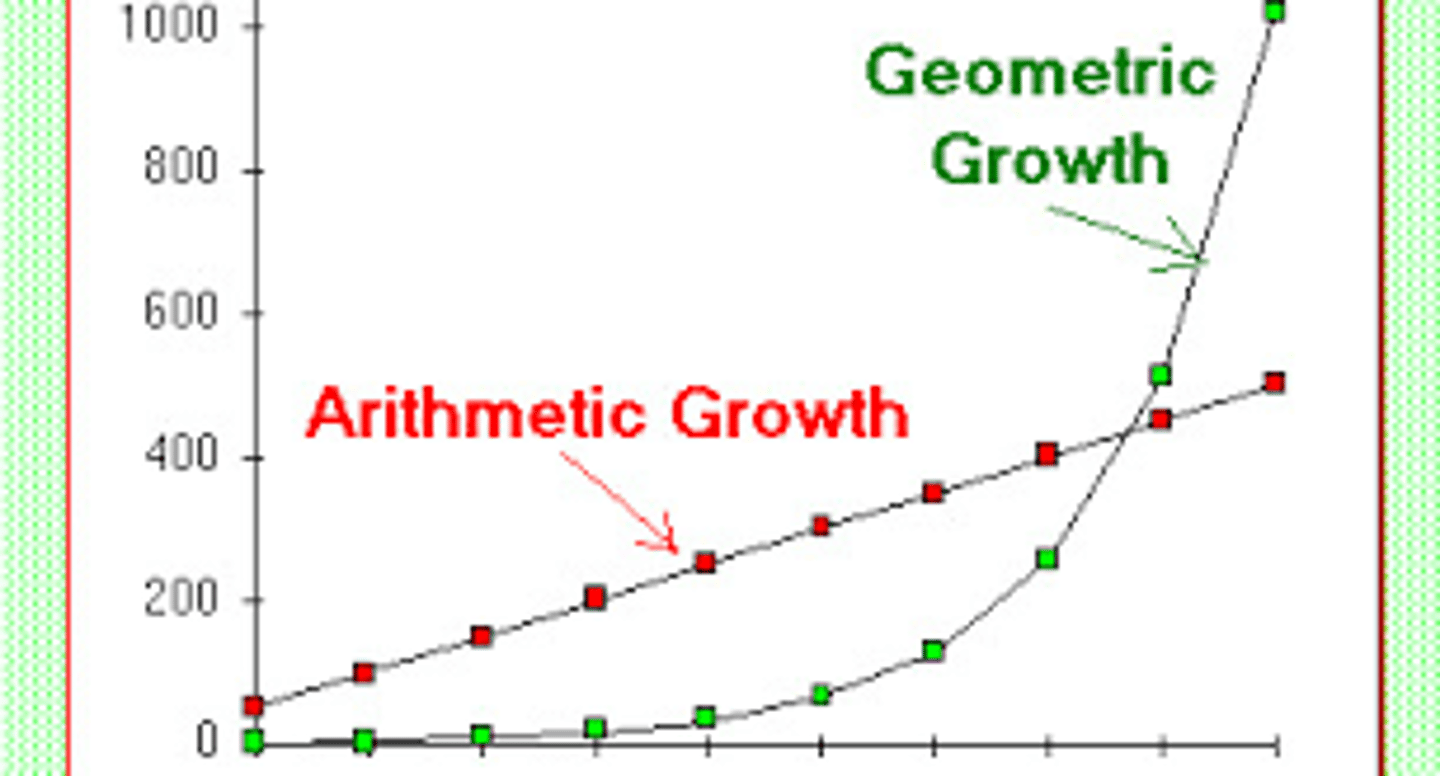
what are the implications of the malthusian population theory?
law of diminishing returns, soil will be over-cultivated due to too much farming, decreasing the supply of resources, causing a fall in population, this can be solved by increased technology such as fertilisers
boserup's population theory
an increasing population would encourage inventions to increase the supply of resources, necessity is the mother of invention
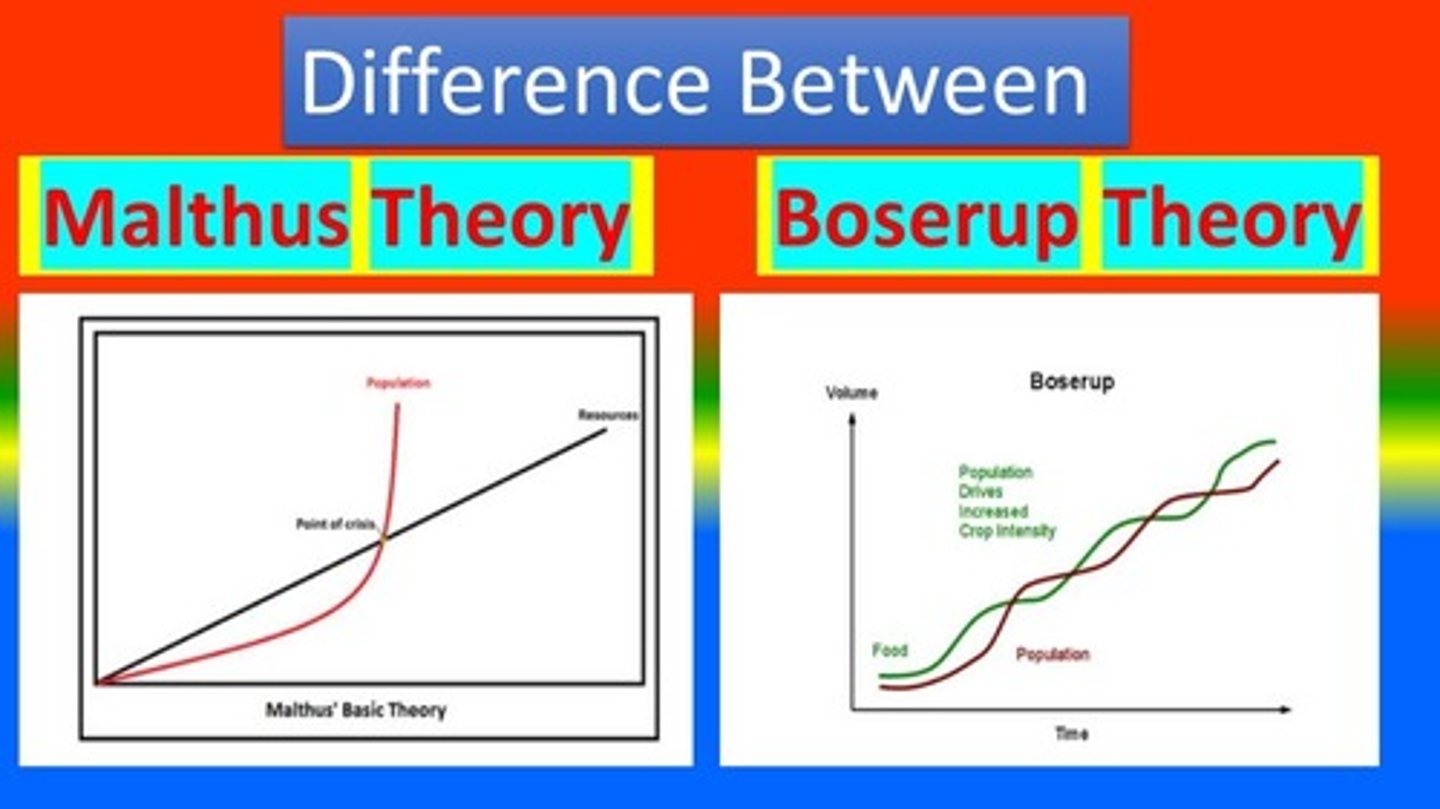
what are the implications of boserup's population theory?
increased inventions lead to better technology (tractors, irrigation, fertilisers)
what are the problems of boserup's population theory?
finite resources (fossil fuels), the later in time the less effective the inventions will be
characteristics of youthful populations
high dependancy ratio, often in LICs, high birth rate, low life expectancy, population pyramid has a wide base, a narrow top and is short
characteristics of ageing populations
high dependancy ratio, often in HICs, high life expectancy, low birth rate (government policies), population pyramids has a narrow base, a wide top and is tall (East Devon)
ageing population advantages
social: the retired can help younger working relatives (with child-care)
economic: increased job opportunities in care professions
political: political parties can rely on the vote of the elderly
ageing population disadvantages
social: strain on housing resources
economic: not many people available/too old to work
political: drains government resources - health care, pensions, transport (need for higher taxes)
3 types of migration
refugee, asylum seeker, economic migrant
refugee
a person fleeing from civil war or a natural disaster but not fleeing out of fear of persecution (has been granted permission to stay)
refugee example
the UK granted a 3-year visa to ukrainian refugees after russia invaded ukraine through the 'ukrainian family scheme' the UK government set up, the UK government issued 72,000 visas through the UFS
asylum seeker
a person who has fled their country out of fear of persecution
economic migrant
a person who has left their country to seek employment in another country either legally or illegally
economic migrant example (australia)
australia, after 1945 the government encouraged young european families to migrate to australia
pull to australia: rich, freedom, great agriculture potential
push from australia: wild fires, dangerous animals, flooding
outcomes: more skilled workers, original citizens find it hard to find jobs, migrants fly in - higher carbon footprint
economic migrant example (poland)
in 2007 1.3 million polish people moved to the UK for seasonal work however many of them remained in the UK, poland's unemployment rate was 17%, they were attracted by the free healthcare (the NHS spent £350 million on maternity services for foreign born mothers), the polish economy therefore grew as remittances were sent home (in 2006 it was €3.5 billion), however it increased the strain the NHS & education in the UK, the high demand for resources (housing) led to shortages - increasing prices
migration push factors
environmental: natural disasters
economic: lower wages, poverty, lack of job opportunities
political: war, active religious persecution
social: overpopulation, a lack of health care
migration pull factors
environmental: a better environment (air/water/noise/pollution)
economic: a range of new job opportunities, higher wages
political: principles of religious tolerance
social: a better standard of living/education
the lee model
states that both the origin and destination have positive and negative attributes
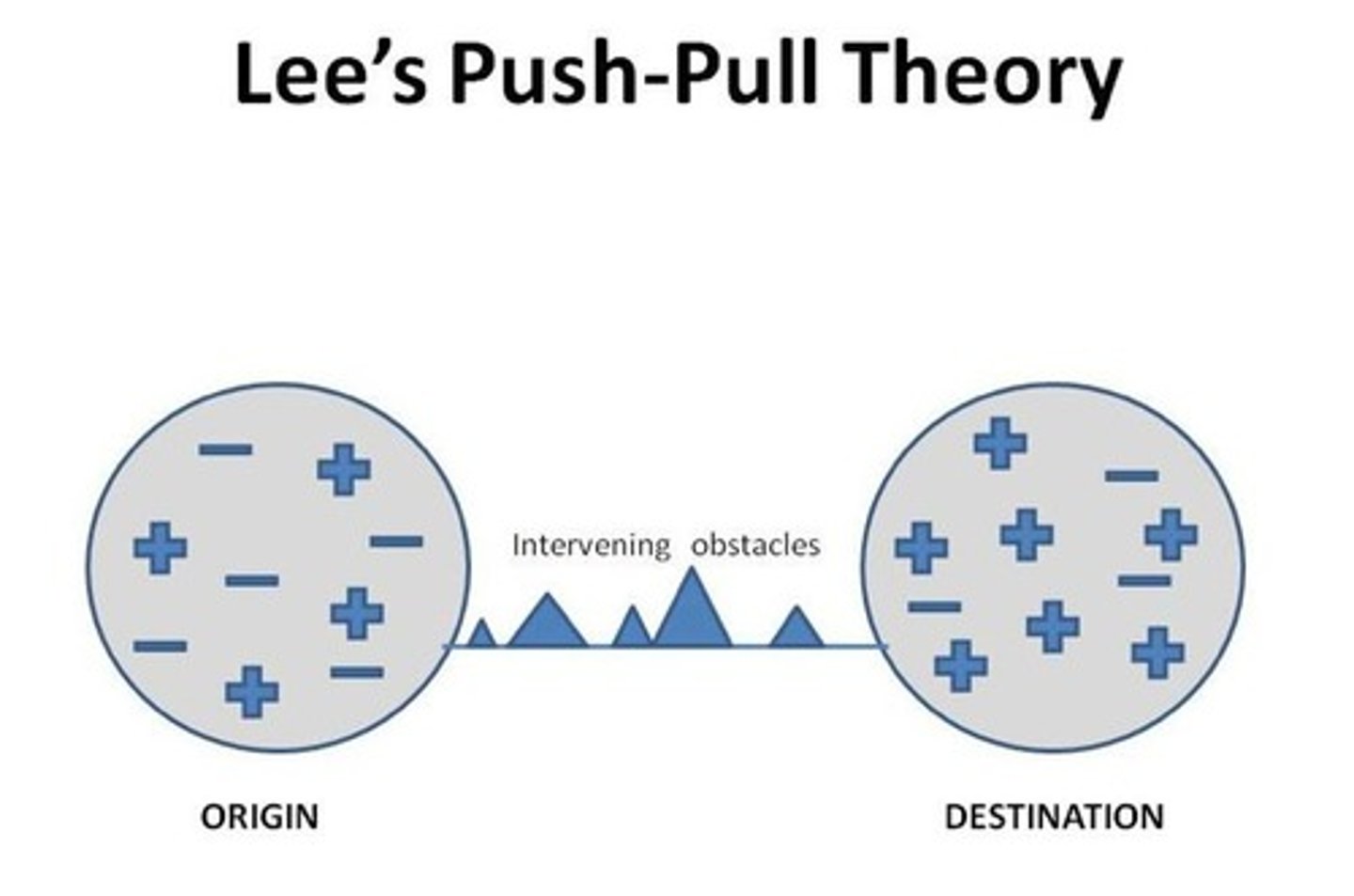
positive migration outcomes (origin country)
overpopulation problems would be solved (enough resources), less demand for education/health care
negative migration outcomes (origin country)
shortages of skilled workers (doctors), gender imbalances (more women), develops an ageing population (those of working age are more likely migrate)
positive migration outcomes (destination country)
labour pool increased, new skilled introduced, migrant workers are mobile by paying tax and spending money, cultural and racial variety
negative migration outcomes (destination country)
housing shortages, cultural differences can lead to racism, strained education/health care
WHO's health definition
a state of complete physical, mental, and social well-being and not merely the absence of disease
epidemic diseases
(local) an outbreak of disease that attacks many people at the same time and may spread throughout many communities (malaria, yellow fever, ebola)
pandemic disease
(global) when an epidemic disease spreads throughout the whole world (covid-19, spanish flu, the plague, chicken pox, AIDs)
2 types of disease
infectious, affluence
causes of infectious diseases in LICs
1. malnutrition - less food availability
2. lack of clean water
3. high population density - diseases can spread easier
4. poor health care - limited access
5. poor education - limited knowledge about illness, how to avoid it and sexual health (AIDs)
6. vectors are more common in LICs - (mosquitos for malaria)
causes of affluence diseases in HICs
1. ageing populations - more elderly and old age diseases (heart attacks)
2. unhealthy lifestyles - high fat and sugar diets, smoking (cancer and diabetes)
diseases caused by poor water quality
cholera, diarrhoea & typhoid
overpopulation
the number of people in an area exceeds the capacity of the environment, lower standard of living, resources are shared, economic standard per capita declines
optimum population
when the population and resources are perfectly matched, highest economic standard of living, resources are exploited effectively
underpopulation
too few people to sufficiently develop the resources of a country
carrying capacity
the largest population that an environment can support (resources)
ecological footprint formula
total biocapacity of an area / population
factors affecting health
1. climate - malaria comes from mosquitos in warm climates
2. education - knowledge about diseases, how to avoid it and how to treat it
3. nutrition/diet
4. water supply/sanitation - open sewers allows diseases to breed rapidly
5. living conditions - damp/cold conditions lead to lung diseases, overcrowded conditions lead to rapid spread disease
6. demographic stage - ageing populations are more likely to develop coronary heart disease, cancer or strokes
7. sexual health - multiple partners, using no protection leads to AIDs or HIVs
8. lifestyle choices - smoking = lung cancer, alcohol = heart diseases, poor diet = diabetes
epidemiological transition
how the leading cause of death changes as a country develop
the classical (western) ETM
gradual transition from high mortality + fertility to low, accompanied by modernisation, exponential population growth + sustained economic development correlates to the downwards trend to mortality
the accelerated ETM
occurred mostly notably in japan, the period for mortality to reach a certain level was much shorter than in the classical model, abortion had played a huge role in japan
the delayed ETM
the yet-to-be transition for most developing countries, stage 3 DTM, not completed the DTM yet
3 stages of the epidemiological transition
1. the age of pestilence and famine - mortality was high and life expectancy was low
2. the age of receding pandemic - mortality declined but infectious diseases were still responsible for the majority of deaths
3. the age of degenerative and man-made diseases - mortality continues to decline and approaches stability at a low level
tandridge (local health case study) knowledge
tandridge 60% "very good health" - england 42%
tandridge 17% retired - england 14%
tandridge 8% disabled - england 17%
tandridge 46% are between ages 40-74
tandridge 8.6 per 1000 suicide rate - england 10.4 per 1000
tandridge 77% physically active adults - england 67%
tandridge 59% overweight/obese - england 64%
tandridge 89% employed - england 75%
tandridge average income £36,000 - england £32,000
factors impacting health in tandridge
social: a better/healthier community leads to less suicide
environmental: more access to green open space can encourage people to exercise
economic: a higher income can allow people to pay for better/private health care
coronary heart disease
fatty material builds up inside the coronary arteries, become narrow, cannot supply oxygenated blood to the heart
what causes coronary heart disease?
smoking, obesity, lack of exercise, unhealthy diet
coronary heart disease A02
1. more common in HICs because people can afford to eat more/unhealthy foods and have more unhealthy lifestyles due to a lack of exercise
2. can affect mental health which leads to unemployment
3. strain on the NHS, expensive for the government
how can we manage this disease?
better lifestyle, more exercise, healthier foods, medication is available, surgery
malaria
a life-threatening disease caused by parasites that are transmitted through mosquito bites
socio-economic/environmental variables leading to malaria
1. found in hot climates (along the equator)
2. education - low levels of awareness prevent treatment
3. income - not able to afford medicine
4. prone to LICs - don't have the resources to prevent/treat it
effects of malaria
economic: poverty, slowed economic growth due to loss of life, great expenditure on public health, worker productivity lowers
social: affects their quality of life, severe forms can lead to disabilities, comas and death
international government organisations (IGOs)
regional/global organisations of which countries are members, they manage global development, specific health issues or environmental issues
non-governmental organisations (NGOs)
a non-profit association that operates independently of the government, can be local/global
positives of IGOs
1. legitimacy and authority, have official recognition and power to make global laws/decisions
2. have access to significant financial resources enabling them to fund large-scale initiatives
3. have a broad global reach
4. set international norms, promote better standards
negatives of IGOs
1. can be influenced by political interests, lead to biased/delayed actions
2. can be bureaucratic, slows down decision-making
3. not directly involved with individuals or communities
positives of NGOs
1. more adaptable/flexible, can respond quickly to emerging issues
2. smaller size allows for more localised and community-driven interventions
3. they target populations allowing them to develop specialised knowledge
negatives of NGOs
1. rely on external funding (donations) which can be limited/unpredictable
2. lack of authority, their recommendations are not binding
examples of IGOs
the world bank, WHO, WTO
examples of NGOs
greenpeace, fair trade, CAFOD, water aid, the red cross
agricultural systems
the application of human inputs (labour and capital) to natural factors (climate and soil)
agricultural productivity
the amount of useful output in proportion to the amount of inputs (shows the farm's efficiency)
intensive farming
high labour and capital inputs (machinery) in relation to agricultural land to maximise yields
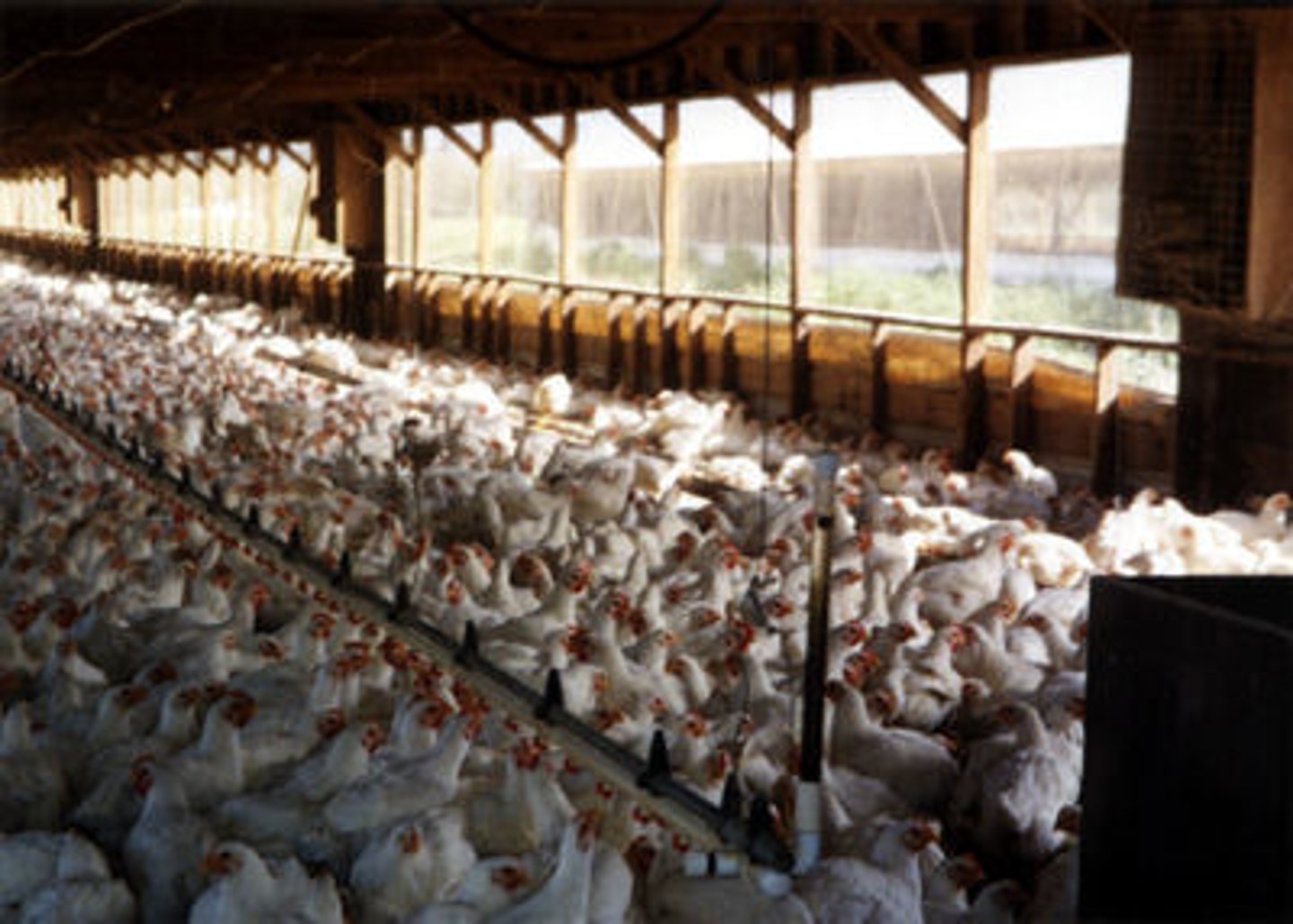
extensive farming
low labour and capital inputs in relation to agricultural land to produce at lower outputs
commercial farming
agriculture with the intention of providing yields that can be sold commercially to make a profit (usually intensive farming)
subsistence farming
self-sufficient farming, crops are grown only to support those growing the crops (family) with little profit - commonly found in LICs